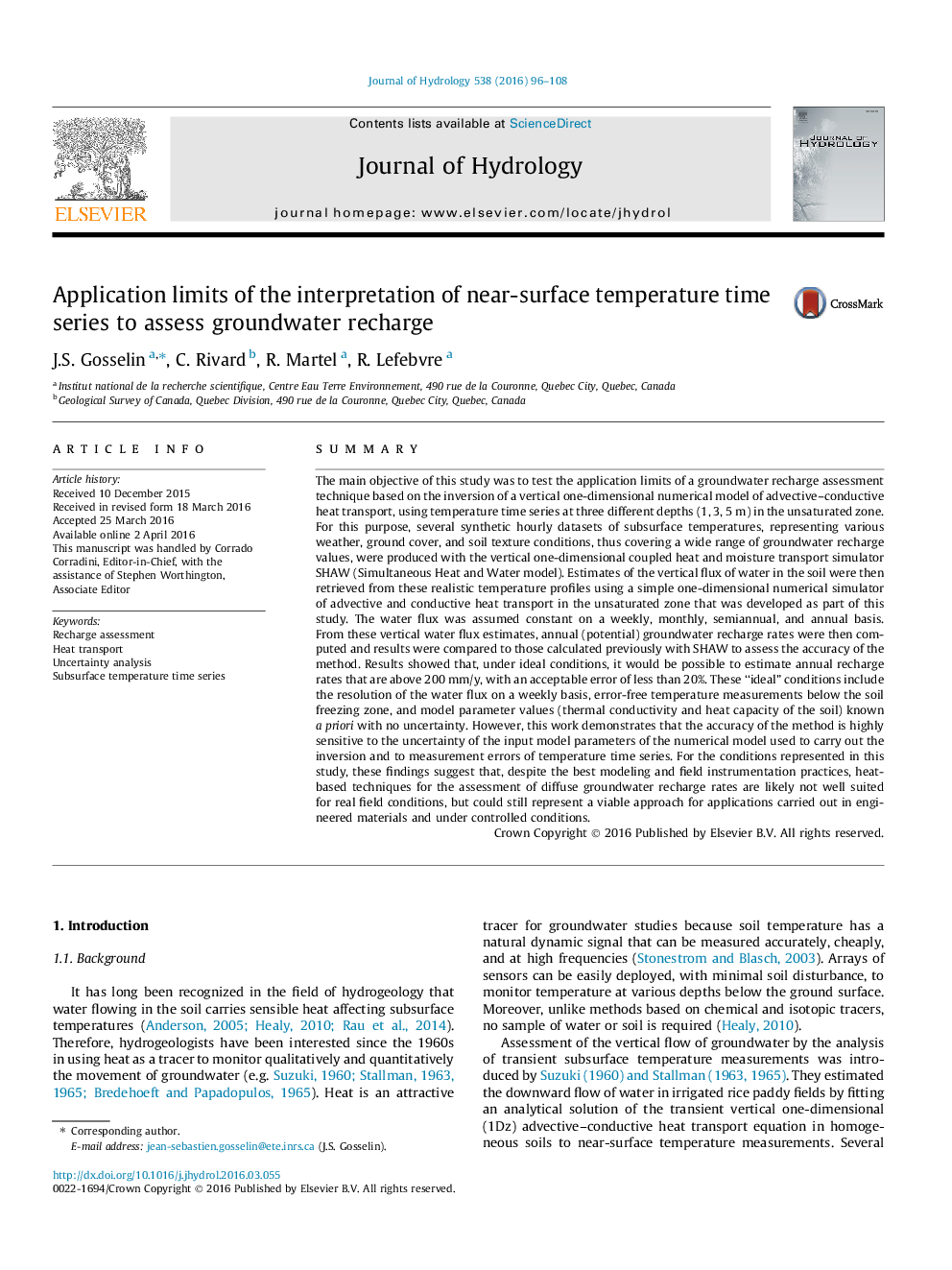| کد مقاله | کد نشریه | سال انتشار | مقاله انگلیسی | نسخه تمام متن |
|---|---|---|---|---|
| 6409578 | 1629914 | 2016 | 13 صفحه PDF | دانلود رایگان |
عنوان انگلیسی مقاله ISI
Application limits of the interpretation of near-surface temperature time series to assess groundwater recharge
ترجمه فارسی عنوان
محدودیت های کاربرد تفسیر سری زمانی دمای سطح زمین برای ارزیابی شارژ آبهای زیرزمینی
دانلود مقاله + سفارش ترجمه
دانلود مقاله ISI انگلیسی
رایگان برای ایرانیان
کلمات کلیدی
ارزیابی شارژ، حمل و نقل حرارتی، تجزیه و تحلیل عدم قطعیت، سری زمانی دمای زیرسطحی،
موضوعات مرتبط
مهندسی و علوم پایه
علوم زمین و سیارات
فرآیندهای سطح زمین
چکیده انگلیسی
The main objective of this study was to test the application limits of a groundwater recharge assessment technique based on the inversion of a vertical one-dimensional numerical model of advective-conductive heat transport, using temperature time series at three different depths (1, 3, 5Â m) in the unsaturated zone. For this purpose, several synthetic hourly datasets of subsurface temperatures, representing various weather, ground cover, and soil texture conditions, thus covering a wide range of groundwater recharge values, were produced with the vertical one-dimensional coupled heat and moisture transport simulator SHAW (Simultaneous Heat and Water model). Estimates of the vertical flux of water in the soil were then retrieved from these realistic temperature profiles using a simple one-dimensional numerical simulator of advective and conductive heat transport in the unsaturated zone that was developed as part of this study. The water flux was assumed constant on a weekly, monthly, semiannual, and annual basis. From these vertical water flux estimates, annual (potential) groundwater recharge rates were then computed and results were compared to those calculated previously with SHAW to assess the accuracy of the method. Results showed that, under ideal conditions, it would be possible to estimate annual recharge rates that are above 200Â mm/y, with an acceptable error of less than 20%. These “ideal” conditions include the resolution of the water flux on a weekly basis, error-free temperature measurements below the soil freezing zone, and model parameter values (thermal conductivity and heat capacity of the soil) known a priori with no uncertainty. However, this work demonstrates that the accuracy of the method is highly sensitive to the uncertainty of the input model parameters of the numerical model used to carry out the inversion and to measurement errors of temperature time series. For the conditions represented in this study, these findings suggest that, despite the best modeling and field instrumentation practices, heat-based techniques for the assessment of diffuse groundwater recharge rates are likely not well suited for real field conditions, but could still represent a viable approach for applications carried out in engineered materials and under controlled conditions.
ناشر
Database: Elsevier - ScienceDirect (ساینس دایرکت)
Journal: Journal of Hydrology - Volume 538, July 2016, Pages 96-108
Journal: Journal of Hydrology - Volume 538, July 2016, Pages 96-108
نویسندگان
J.S. Gosselin, C. Rivard, R. Martel, R. Lefebvre,
